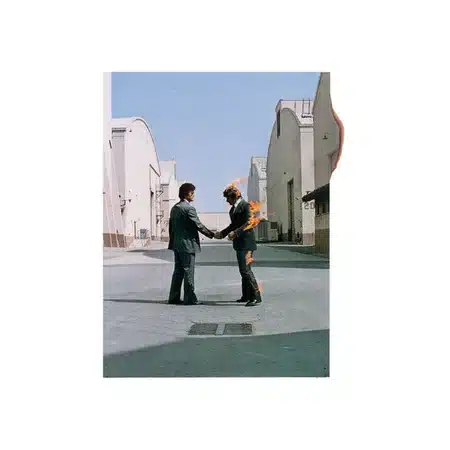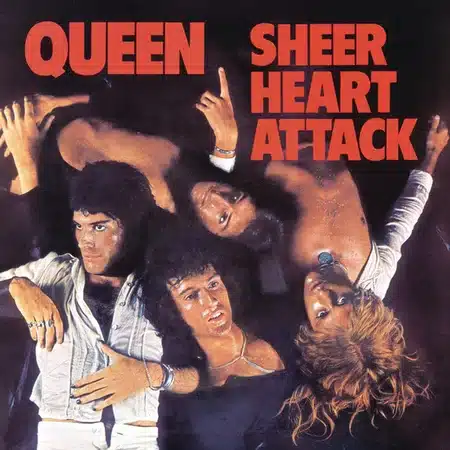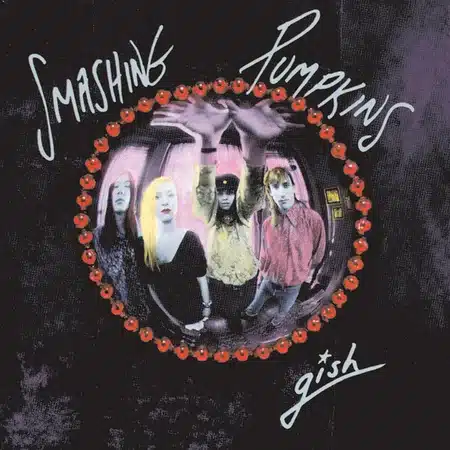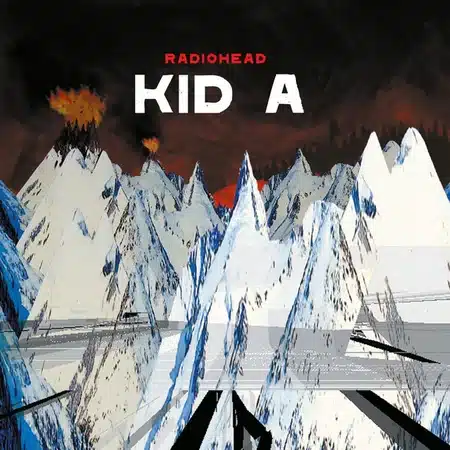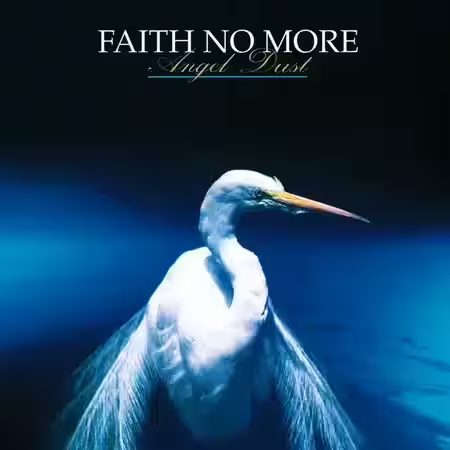
Introduction
In 1992, Faith No More released an album that would challenge musical norms and solidify their place in rock history. “Angel Dust” is an album that defies easy categorisation, blending elements of alternative metal and avant-garde styles. As we explore the depths of this remarkable work, we’ll uncover its creation, impact, and lasting legacy.
This article delves into the genesis of “Angel Dust,” the intricate recording process, its commercial performance, and critical reception. We will also analyse each track, discuss the album’s themes, and explore its influence on the music world. Additionally, we’ll highlight the promotional strategies and touring efforts that brought “Angel Dust” to audiences worldwide.
| Attribute | Details |
|---|---|
| Release date | June 8, 1992 |
| Album title | Angel Dust |
| Genre | Alternative metal, avant-garde metal |
| Total runtime | 58:47 |
| Number of tracks | 14 |
| Record label | Slash, Reprise |
| Recording studio | Coast Recorders and Brilliant Studios, San Francisco, California |
| Producer(s) | Matt Wallace, Faith No More |
Upon its release, “Angel Dust” captivated audiences and critics alike, selling over 2.5 million copies worldwide. It marked Faith No More’s only top-ten entry on the Billboard 200, debuting at number ten. Keyboardist Roddy Bottum explained, “We wanted to make something beautiful and horrific at the same time,” encapsulating the album’s unique essence.
The blogs on this site are often used as the basis for podcast episodes where we dive deep and discuss the albums, memories, people and what was happening at the time. Here’s our episode about The Real Thing by Faith No More.
The Genesis of “Angel Dust”
As the 1990s dawned, the music world was shifting. Grunge and alternative rock were gaining momentum, and Faith No More found themselves at a crossroads. Following the success of their previous album, “The Real Thing”, the band sought to push boundaries further.
Faith No More’s evolution was marked by the arrival of vocalist Mike Patton, whose creative input grew significantly during the making of “Angel Dust.” This album represented a departure from their earlier work, embracing more experimental sounds and themes. It was a collective effort, with contributions from all band members.
Below is a table listing the band members and their roles during the creation of “Angel Dust”:
| Member | Instrument/Role |
|---|---|
| Mike Patton | Vocals |
| Jim Martin | Guitar |
| Billy Gould | Bass |
| Roddy Bottum | Keyboards |
| Mike Bordin | Drums |
The album’s title, “Angel Dust,” was chosen by Bottum, reflecting the duality of beauty and horror. The cover art, featuring a great egret and a cow hanging in a meat locker, further emphasises this theme. Financially, the album was supported by Slash and Reprise Records, with a significant budget that allowed for creative freedom.
Recording Process
The recording of “Angel Dust” took place from late 1991 to early 1992 at Coast Recorders and Brilliant Studios in San Francisco. These sessions were marked by tension, particularly between guitarist Jim Martin and the rest of the band. Despite this, the album emerged as a cohesive and innovative work.
Producer Matt Wallace played a crucial role in shaping the album’s sound. Known for his work on previous Faith No More albums, Wallace’s expertise helped navigate the band’s creative differences. He was assisted by engineers Adam Munoz and Craig Doubet, who contributed to the album’s polished yet edgy sound.
Below is a table of likely hardware used during the recording sessions, based on known studio equipment of the time:
| Equipment | Details |
|---|---|
| Microphones | Neumann U87, Shure SM57 |
| Mixing Desk | SSL 4000E |
| Guitar Amplifiers | Mesa Boogie Mark III |
| Effects | Eventide Harmonizer |
The recording process was not without its challenges. Martin’s dissatisfaction with the album’s direction led to his eventual departure from the band. However, this tension also fueled creativity, resulting in an album that remains a high point in Faith No More’s discography.
Matt Wallace’s production credits include several notable albums. Below is a table of some of his other works:
| Producer | Artist | Album | Year |
|---|---|---|---|
| Matt Wallace | Faith No More | The Real Thing | 1989 |
| Matt Wallace | Maroon 5 | Songs About Jane | 2002 |
Commercial Performance and Reception
“Angel Dust” was a commercial success, reaching number ten on the Billboard 200. Its unique sound resonated with audiences worldwide, selling over 2.5 million copies. This success was a testament to Faith No More’s ability to push musical boundaries while maintaining broad appeal.
The album’s place in Faith No More’s discography is significant, as shown in the table below:
| Album | Year | Sales Data |
|---|---|---|
| We Care a Lot | 1985 | Specific sales figures are not available. |
| Introduce Yourself | 1987 | Specific sales figures are not available. |
| The Real Thing | 1989 | Sold over 1.2 million copies worldwide. Certified Platinum in the U.S. (over 1 million copies), Platinum in Australia, and Silver in the UK. |
| Angel Dust | 1992 | Sold over 2.5 million copies worldwide. Certified Gold in the U.S. (over 500,000 copies), Gold in Germany (over 250,000 copies), and Silver in the UK. |
| King for a Day… Fool for a Lifetime | 1995 | Sold approximately 151,000 copies worldwide. Certified Gold in Australia (over 35,000 copies). |
| Album of the Year | 1997 | Sold around 2 million copies worldwide. Certified Platinum in Australia (over 70,000 copies). |
In 1992, the music world saw the release of several influential albums. These include Dirt by Alice in Chains and Rage Against the Machine by Rage Against the Machine. These albums, like “Angel Dust,” have left a lasting impact on the music industry.
“Angel Dust” received numerous accolades, including a nomination for Best Hard Rock Performance at the Grammy Awards. Its critical acclaim and commercial success have cemented its place as a classic in the rock genre.
Track Analysis
The singles from “Angel Dust” showcase the album’s diversity and creativity. These tracks include “Midlife Crisis,” “A Small Victory,” and “Everything’s Ruined,” each offering a unique perspective on the album’s themes.
Below is a table detailing the tracks on “Angel Dust” and their writing credits:
| Track Name | Length | Writing Credit |
|---|---|---|
| Land of Sunshine | 3:45 | Patton |
| Caffeine | 4:29 | Patton |
| Midlife Crisis* | 4:19 | Patton |
| RV | 3:41 | Patton |
| Smaller and Smaller | 5:11 | Patton |
| Everything’s Ruined | 4:35 | Patton |
| Malpractice | 4:02 | Patton |
| Kindergarten | 4:31 | Patton |
| Be Aggressive | 3:43 | Patton |
| A Small Victory* | 4:58 | Patton |
| Crack Hitler | 4:40 | Patton |
| Jizzlobber | 6:40 | Patton |
| Midnight Cowboy | 4:13 | Barry |
| Easy | 3:08 | Richie |
Note: Tracks marked with * were singles. “Midlife Crisis” and “A Small Victory” both received significant airplay, with “Midlife Crisis” reaching number one on the US Modern Rock Tracks chart.
Song Meaning and Lyrics
The lyrics of “Angel Dust” explore themes of identity, success, and the human condition. Singles like “Midlife Crisis” delve into the struggles of self-discovery and societal expectations. The track uses samples from Simon and Garfunkel’s “Cecilia,” adding a layer of irony to its introspective lyrics.
“Land of Sunshine” draws inspiration from fortune cookie messages and sleep deprivation experiments, reflecting the absurdity of life’s promises. Meanwhile, “A Small Victory” examines the nature of competition and personal triumphs, using metaphors of war and conquest.
The songwriting process was a collaborative effort, with Patton’s influence evident in the album’s lyrical complexity. Each track offers a unique perspective, inviting listeners to reflect on their own experiences and perceptions.
Touring and Promotion of Angel Dust
To promote “Angel Dust,” Faith No More embarked on an extensive tour, sharing stages with Guns N’ Roses and Soundgarden. Their promotional strategies included music videos, live performances, and appearances on television shows, ensuring the album reached a wide audience.
The “Angel Dust” tour comprised over 60 shows across Europe, North America, and Australia. Notable performances included a sold-out show at Wembley Stadium and appearances at major festivals like Roskilde and Lollapalooza.
During the tour, Faith No More performed alongside artists such as Metallica and Nirvana. These collaborations brought the album to diverse audiences, further solidifying its impact on the music scene.
Influences and Legacy
“Angel Dust” was influenced by a wide range of musical styles, from funk and metal to jazz and classical. Artists like Black Sabbath and Frank Zappa played a role in shaping the album’s sound, as did the burgeoning alternative scene of the early 1990s.
Below is a table detailing the influences on “Angel Dust” and the artists it has inspired:
| Influences on “Angel Dust” | Artists Influenced by “Angel Dust” |
|---|---|
| Black Sabbath | System of a Down |
| Frank Zappa | Deftones |
| The Beatles | Mastodon |
Released in 1992, “Angel Dust” arrived during a transformative year in music. Other notable events include the release of Nirvana’s “Nevermind” and the rise of grunge. The album’s eclectic style and innovative approach have influenced countless artists and continue to resonate with fans today.
Five Things about Angel Dust
“Angel Dust” is a treasure trove of interesting facts. Here are five verified facts about the album:
| Fact | Details |
|---|---|
| Unique Cover Art | The cover features a great egret and a cow, symbolising beauty and horror. |
| Sampled Music | “Midlife Crisis” samples Simon and Garfunkel’s “Cecilia.” |
| Tension in the Band | Guitarist Jim Martin left the band after the album’s release. |
| Influential Sound | The album has influenced bands like System of a Down and Deftones. |
| Critical Acclaim | Rolling Stone ranked it 65th on their “100 Greatest Metal Albums of All Time.” |
Media and Television Usage
Despite its impact, “Angel Dust” has seen limited use in media. No notable instances of its songs being featured in TV or movies have been found, highlighting its status as a cult classic rather than mainstream fare.
Critical Reviews and Retrospectives
“Angel Dust” received widespread critical acclaim upon its release. Critics praised its innovative sound and lyrical depth, with many considering it a masterpiece of the alternative metal genre.
Below is a table summarising some of the album’s critical reviews:
| Publication | Review Score | Notable Quotes |
|---|---|---|
| Rolling Stone | 4/5 | “A bizarro masterpiece.” |
| NME | 9/10 | “Bold and adventurous.” |
After Angel Dust
Following the release of “Angel Dust,” Faith No More experienced significant changes. Guitarist Jim Martin departed, and the band continued to evolve with albums like “King for a Day… Fool for a Lifetime.” Despite these shifts, they maintained their status as innovators in the rock genre.
Today, Faith No More remains influential, with their music continuing to inspire new generations of artists. As of 2025, the band is on a semi-permanent hiatus, but their legacy endures through their groundbreaking work.
Conclusion
“Angel Dust” by Faith No More is a landmark album that continues to captivate listeners with its bold experimentation and profound themes. Its lasting impact on music and culture is a testament to the band’s visionary approach and willingness to defy conventions.
Further Reading
For more insights into Faith No More and similar genres, explore our articles on The Real Thing by Faith No More and Superunknown by Soundgarden. Additionally, visit the Wikipedia page for “Angel Dust”, the Official Faith No More website, and the Record label’s website.
Let us know in the comments what your thoughts are on Angel Dust by Faith No More. Did we miss anything? Share your experiences and join the conversation!
